Bethesda Softworks LLC is an American video game publisher based in Rockville, Maryland. The company was founded by Christopher Weaver and Ed Fletcher in 1986 as a division of Media Technology Limited, and in 1999 became a subsidiary of ZeniMax Media. In its first fifteen years, it was a video game developer and self-published its titles. In 2001, Bethesda spun off its own in-house development team into Bethesda Game Studios, and Bethesda Softworks retained only its publishing function. In 2021, Microsoft purchased ZeniMax, maintaining that the company will continue to operate as a separate business.

Loopz is a puzzle video game designed and programmed by Ian Upton for the Atari ST in 1989. He previously worked as head game designer for Audiogenic, who acquired exclusive rights to the game, then in 1990 arranged for Mindscape to publish it for computers in North America and consoles worldwide.
Artworx was a Naples, Florida software company that produced and supported a line of computer games from 1981 to 2020. It is named after the founder's given name. At first the company published a variety of games, including titles in adventure and arcade-action genres, but were later best known for a strip poker series.

Gateway to the Savage Frontier (1991) is a Gold BoxDungeons and Dragons computer game developed by Beyond Software and published by SSI for the Commodore 64, PC and Amiga personal computers.
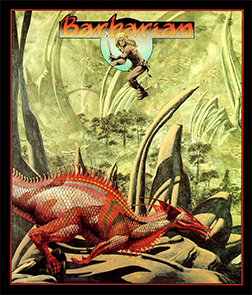
Barbarian is a 1987 platform game by Psygnosis. It was first developed for the Atari ST, and was ported to the Amiga, Commodore 64, MS-DOS, MSX, Amstrad CPC, and ZX Spectrum. The Amiga port was released in 1987; the others were released in 1988. The cover artwork is by fantasy artist Roger Dean.

The Terminator 2029 is a first-person shooter video game developed and published by Bethesda Softworks. It is based on the Terminator film series, and was released in 1992 for DOS. It is Bethesda's second Terminator game following The Terminator (1990).

The Terminator: Rampage is a first-person shooter video game released for personal computers with the operating system DOS by Bethesda Softworks in 1993. It is the third game based on the Terminator film series that was made by Bethesda, following The Terminator and The Terminator 2029.
Wolfenstein is a series of World War II video games originally developed by Muse Software. The majority of the games follow William "B.J." Blazkowicz, an American Army captain and his fight against the Axis powers. Earlier titles are centered around Nazis attempting to harness supernatural and occult forces, while later games are set in an alternate history in which Axis powers won World War II.

Escape from Singe's Castle, also known as Dragon's Lair Part II - Escape From Singe's Castle, is a computer game for the Amstrad CPC, Commodore 64 and ZX Spectrum home computers, released by Software Projects in 1987. ReadySoft released it for the PC in 1989, and for the Amiga and Atari ST in 1990 and 1991, respectively. An Apple IIGS version was released in 2022. The game is sometimes referred to as Dragon's Lair II, but is not the official arcade sequel Dragon's Lair II: Time Warp.
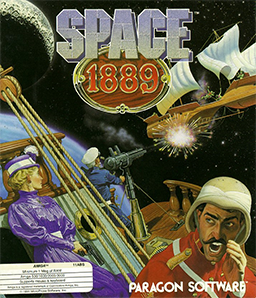
Space: 1889 is an adventure game developed by Paragon Software and published in 1990 for Amiga, Atari ST, and MS-DOS.

Tetris Classic is a 1992 puzzle video game developed and published by Spectrum HoloByte for DOS systems. It is an adaptation of the 1984 Soviet video game Tetris, which was first released in North America in 1988. Spectrum HoloByte subsequently developed a series of annual spin-off titles for Tetris, and intended to take advantage of improvements in computer technology since the original game's release; for Tetris Classic, they showcased the Video Graphics Array (VGA) standard via illustrations depicting scenes from Alexander Pushkin's poem Ruslan and Ludmila, as well as a soundtrack consisting of selections from Mikhail Glinka's opera adaptation of the poem. The game additionally includes competitive and cooperative two-player modes and an option to set a time limit on games. The game received mixed critical commentary; while reviewers appreciated the enhanced presentation and new multiplayer modes, they noted that the gameplay was unchanged from the original version.

Microsoft Flight Simulator, commonly known as Microsoft Flight Simulator 4.0 or FS4, is a 1989 video game developed by Bruce Artwick Organization and published by Microsoft.

Wayne Gretzky Hockey is an ice hockey-themed sports game developed by Bethesda Softworks, and first published in 1988.

Gridiron! is a football game by Bethesda Softworks.

Twilight: 2000 is a role-playing video game released in 1991 for MS-DOS. It is based on the tabletop role-playing game of the same name.
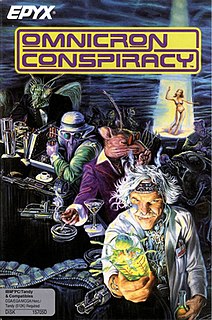
Omnicron Conspiracy is a 1989 video game published by Epyx.
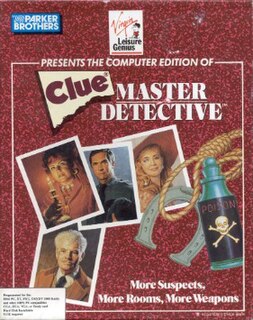
Clue: Master Detective is a 1989 video game published under the Leisure Genius label of Virgin Mastertronic. It is an adaptation of the board game of the same name.
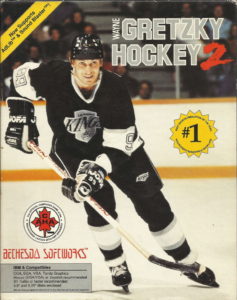
Wayne Gretzky Hockey 2 is a 1990 ice hockey-themed sports game from Bethesda Softworks. The game is a sequel to the 1988 Wayne Gretzky Hockey.
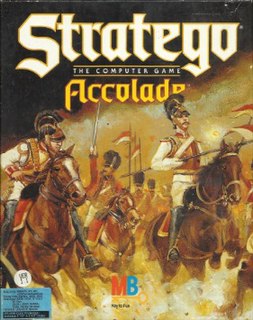
Stratego is a 1990 video game published by Accolade.

















